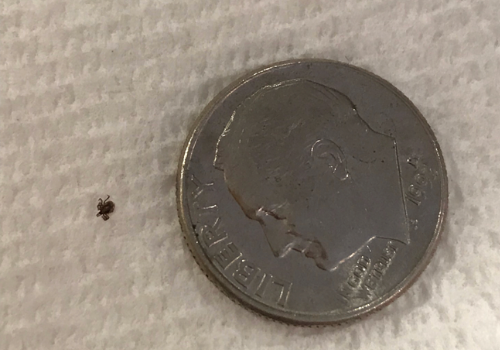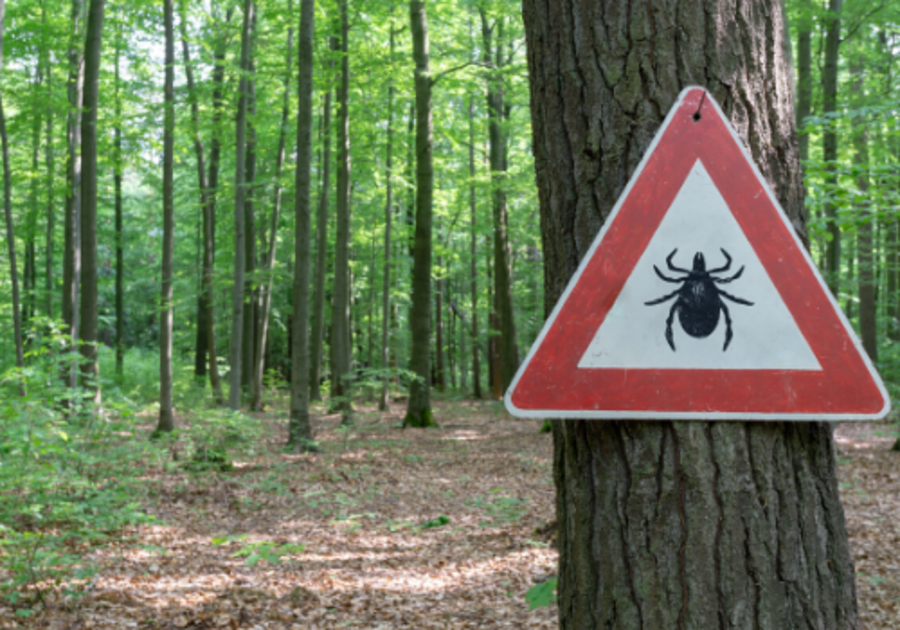As the weather warms up, the outdoors is calling. With COVID limiting our activities, more and more families are exploring the outdoors. Here is some important information and recommendations to prevent tick bites, and, what to do if you get one. Every summer we take our two kiddos (soon to be 5 and 3) on an overnight backpacking trip a couple of hours up north. It’s a bit of a slog to hike in and hike out, but it’s so fun to share the experience with them. Our favorite spot is near Lake Michigan and is rustic, no designated camping spots, no water, no bathrooms – it’s a dig a hole kind of place.
When my daughter was 3, she was out of diapers and able to squat and go (which she thought was awesome). That made tick checking everywhere important. When we returned home the next day we checked both kiddos and found a tick near our daughter’s underwear line, embedded. It was tiny – it looked like a freckle – poppy seed size. We stayed calm, which kept her calm, and removed it with tweezers. I called and spoke with her pediatrician right away who assured me that since we removed it within a 36-hour timeframe, likely all would be ok. He also told me some symptoms to keep an eye out for – rash, especially bull’s eye shaped, fever, fatigue, complaints of joint pain. Thankfully, all was fine and we still go to that camping spot for an overnight every summer (hopefully longer when they get older!). And we always, always check for ticks when we get home.
 |
Wait, what are ticks?
Ticks are small arachnids, external parasites that survive by feeding on the blood of a mammal, bird, and sometimes reptiles and amphibians. In some cases, they can transmit disease.
The two most common ticks found in Michigan are the dog tick and the blacklegged tick (deer tick). There are other species of ticks that are less common in Michigan, but may be more common in other areas of the country; be sure to do research when planning outdoor travel.
In Michigan, Lyme disease is the most commonly reported tick-borne disease, but not all tick bites result in the disease. Only an infected blacklegged (deer) tick can spread Lyme disease. Often disease is transmitted through the bites of immature ticks called nymphs that feed during the spring and summer months. Nymphs can be difficult to see since they are approximately the size of a poppy seed, which is why a thorough check is extremely important.
 This shows the size of a tick compared to a dime! |
Check for ticks regularly and thoroughly
After exploring, especially along the lakeshore, do a thorough tick check on yourself, children, and pets, especially if you have been off-trail, in tall grass, or in leaf litter. Bath time is a good time to conduct a check on kids. Parents should check their children for ticks under the arms, in and around the ears, inside the belly button, behind the knees, between the legs, around the waist, and especially in their hair.
Tips to prevent tick bites
- Stay on the trail, you’re more likely to get a tick on you if you’re hiking through taller vegetation or leaf litter than if you’re on a cleared trail
- Do a quick tick check before you get in your car and a more thorough check when you get home – yourself and children (especially around the hairline) and your pets (inside of ears)
- Keep a lint roller in your car to use on your clothes immediately following a hike – it won’t remove a tick embedded in your skin, but will remove them if they are on your clothes
- If you’re hiking at an open space where there are fewer designated trails, wear pants, socks, and close toed shoes
- Insect repellent with DEET is the most effective for ticks – it does not have to be applied to the skin to be effective, you can spray it on clothing, shoes, and hats
- Toss your hiking clothes in the dryer when you get home on high heat
- Check with your vet for tick removal tools for your pets
- If you have been bitten by a tick, don’t panic
How to remove a tick
The Michigan Department of Health and Human Services (MDHHS) provides instructions for tick removal:
- Use fine-tipped tweezers to grasp the tick as close to the skin as you can.
- Pull upward with steady, even pressure. Don’t twist or jerk the tick.
- After removing the tick, clean the bite area and your hands with rubbing alcohol or soap and water. Never crush a tick with your fingers.
Don't let the worry of ticks stop you from enjoying the outdoors. We are fortunate to have many areas to explore, and being outdoors is excellent for both physical and mental well being. With this tips and tricks, you can enjoy all that West Michigan has to offer with beautiful outdoor spaces, and keep yourself and your family safe and healthy when it comes to ticks.



